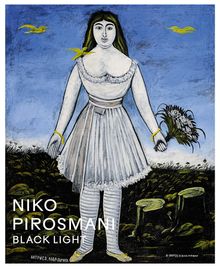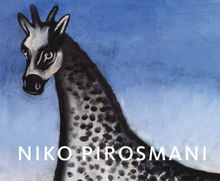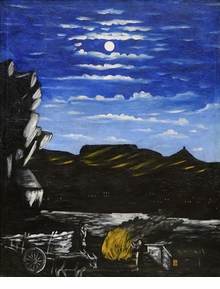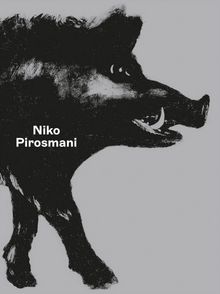| |||||||||||||||||||||||||
ARTIST MONOGRAPHS
|
|
in stock $75.00 Free Shipping UPS GROUND IN THE CONTINENTAL U.S. |
 Niko Pirosmani: Black Light
Niko Pirosmani: Black Light
Published by Louisiana Museum of Modern Art.
Edited by Malou Wedel Bruun, Poul Erik Třjner. Text by Poul Erik Třjner, Kaspar Thormod, Kirill Zdanevich. Interview with Nana Kipiani and Levan Chogoshvili by Daniel Baumann. Contributions by Thea Djordjadze, Mamma Andersson, Tal R.
Georgia’s most famous artist, Niko Pirosmani (1862–1918) is a fabled figure in the story of early modernism. The painter, self-taught and penniless during his lifetime, was heralded posthumously for his "naive" style. Pirosmani’s paintings are simple—blunt, colorful depictions of rustic scenes gleaming against black canvas backgrounds, extraordinary icons of glowing intensity.
This exhibition catalog showcases around 50 rarely seen Pirosmani masterpieces alongside a historical text on the artist written in 1926 by Kirill Zdanevich (who "discovered" Pirosmani); a fictional (but historically accurate) essay discussing Tbilisi as the Paris of Pirosmani’s age by the Danish art historian and writer, Kaspar Thormod; an interview with the Georgian art historian Nana Kipiani and her artist husband Levan Chogoshvili by Swiss curator Daniel Baumann; and reflections on the artist by contemporary artists Thea Djordjadze, Mamma Andersson and Tal R.
PUBLISHER
Louisiana Museum of Modern Art
BOOK FORMAT
Hardcover, 8.5 x 10.25 in. / 96 pgs / 48 color.
PUBLISHING STATUS
Pub Date 12/5/2023
Active
DISTRIBUTION
D.A.P. Exclusive
Catalog: FALL 2023 p. 100
PRODUCT DETAILS
ISBN 9788793659667 TRADE
List Price: $30.00 CAD $43.50 GBP £26.00
AVAILABILITY
In stock
in stock $30.00 Free Shipping UPS GROUND IN THE CONTINENTAL U.S. |
 Niko Pirosmani
Niko Pirosmani
Published by Hatje Cantz.
Edited by Bice Curiger, Klaus Albrecht Schröder, Adrian Ciprian Barsan. Text by Tadao Ando, Friedrich Teja Bach, Adrian Ciprian Barsan, Gottfried Boehm, Bice Curiger, Mariam Dvali, Régis Gayraud, David Lordkipanidze.
The Georgian “naive” painter Niko Pirosmani, sometimes known as Nikala (1862–1918), is long overdue for rediscovery. Today, this autodidact, who painted his pictures of animals and people for inns and pubs, is admired as a leading representative of “naive” art, but the story of his original critical reception is remarkable. Hardly known outside of Georgia these days, his work was nevertheless displayed alongside works by Natalia Goncharova, Mikhail Larionov, Kazimir Malevich and Marc Chagall in the legendary 1913 exhibition Mischén (Target) in Moscow, where he was known as the “Rousseau of the East.”
Pirosmani devised a unique visual vocabulary—black background, elementary colors of red, blue, yellow, green and white—to create his paintings of animals and portraits of merchants, shopkeepers, workmen and noblemen. This book, published for the Albertina’s major Pirosmani retrospective, examines his paintings in the context of art history.
PUBLISHER
Hatje Cantz
BOOK FORMAT
Hardcover, 11.25 x 9.5 in. / 220 pgs / 130 color.
PUBLISHING STATUS
Pub Date 2/19/2019
Out of stock indefinitely
DISTRIBUTION
D.A.P. Exclusive
Catalog: SPRING 2019 p. 124
PRODUCT DETAILS
ISBN 9783775744751 TRADE
List Price: $65.00 CAD $90.00
AVAILABILITY
Not available
STATUS: Out of stock indefinitely. |

